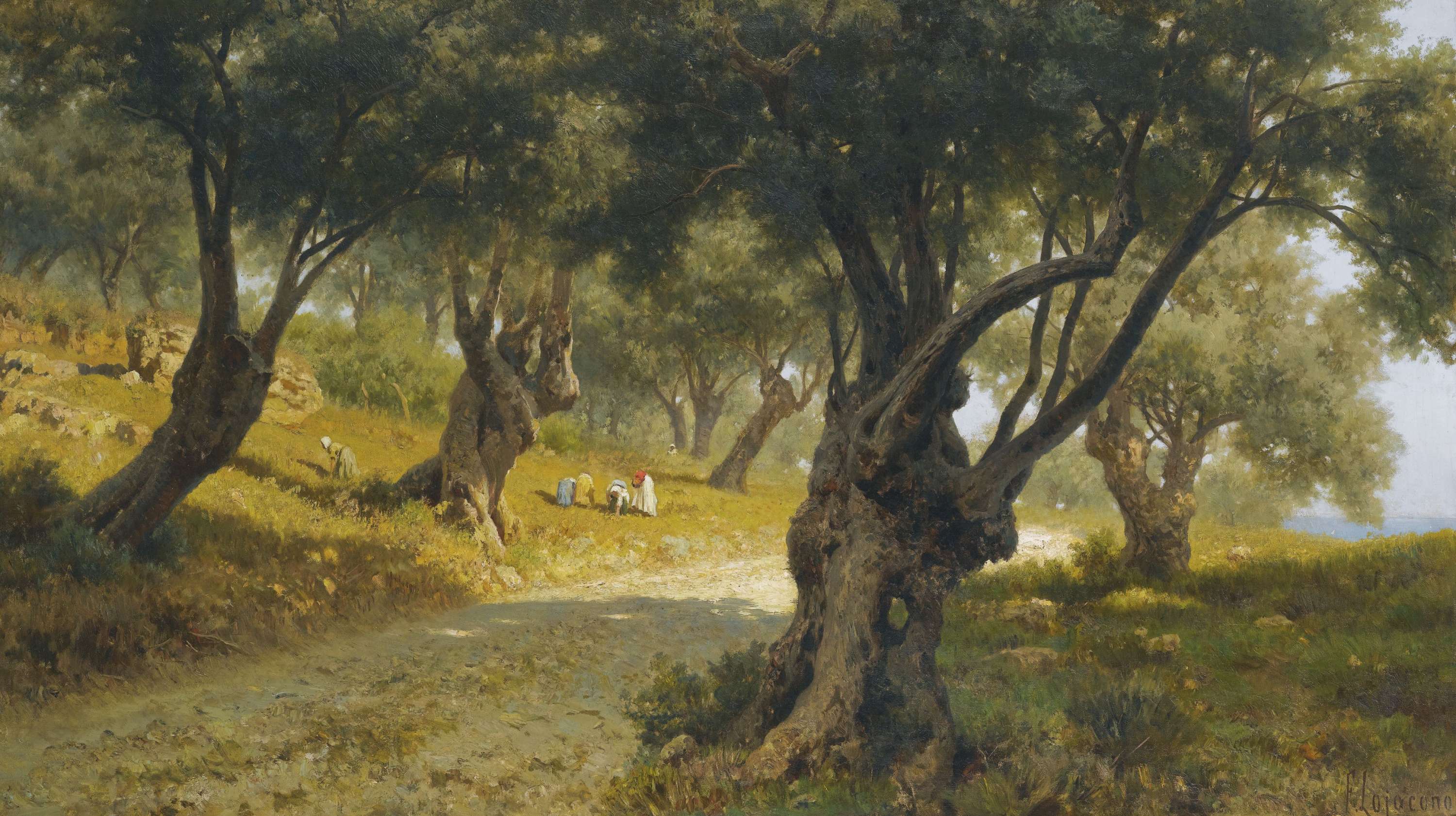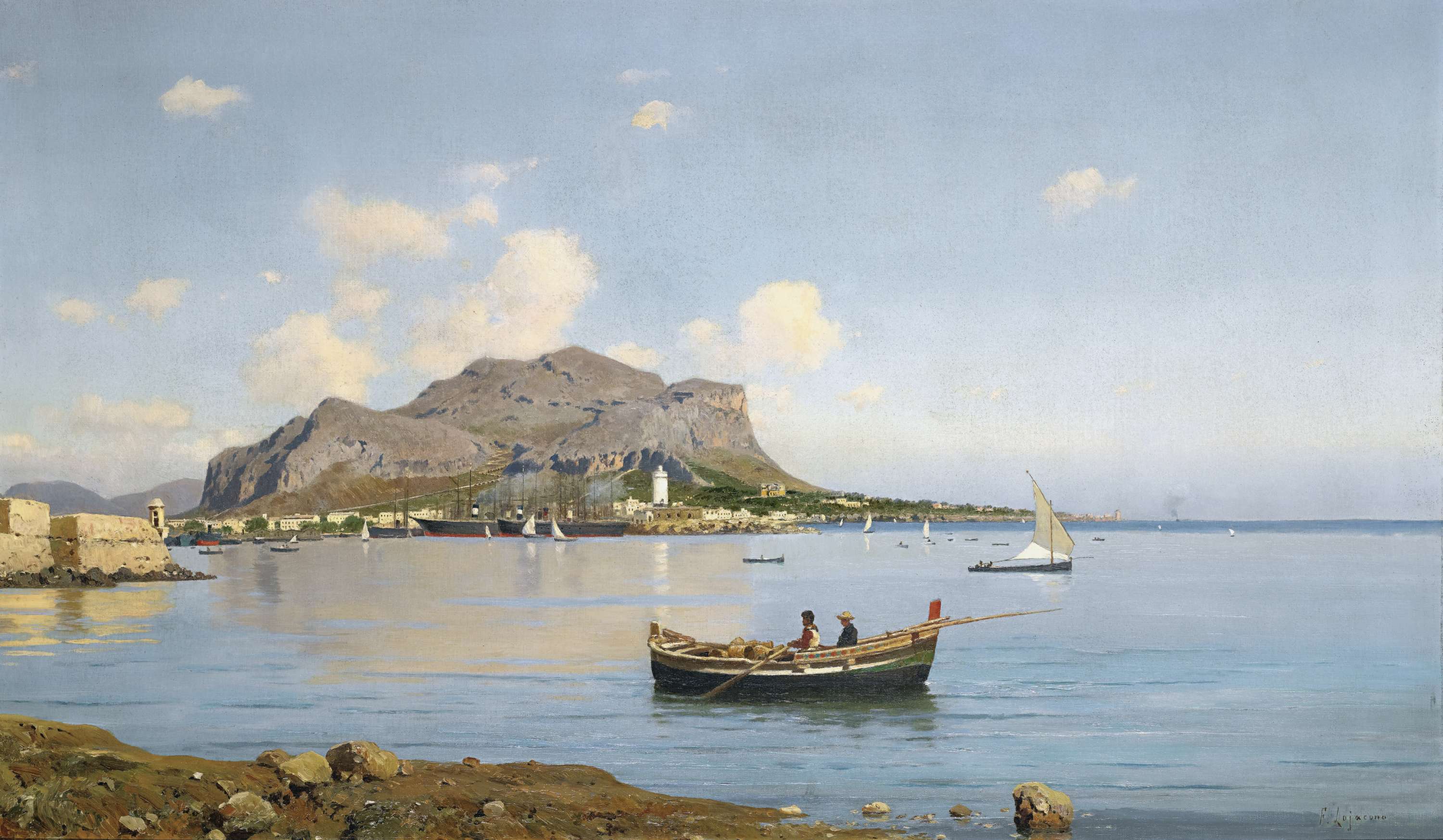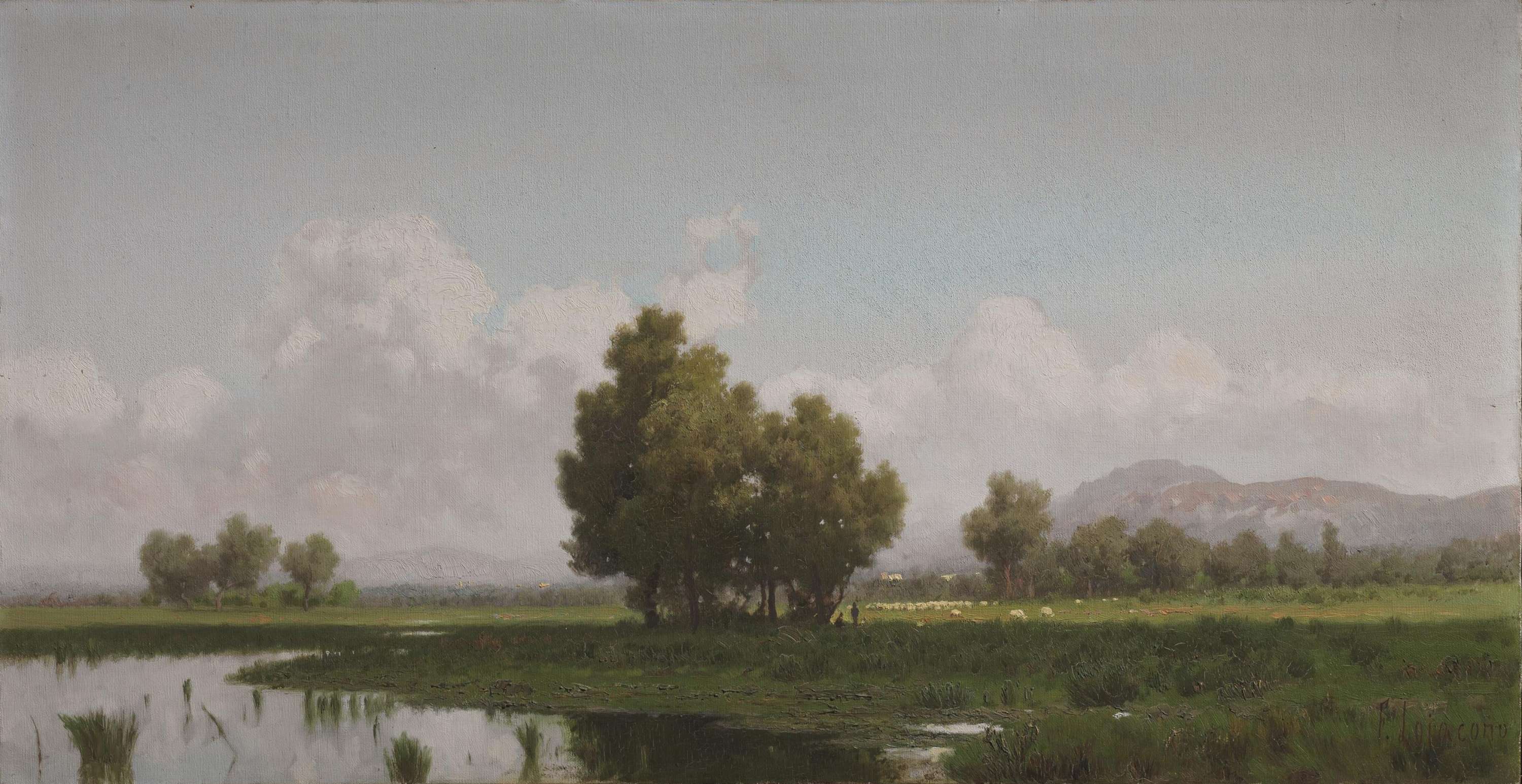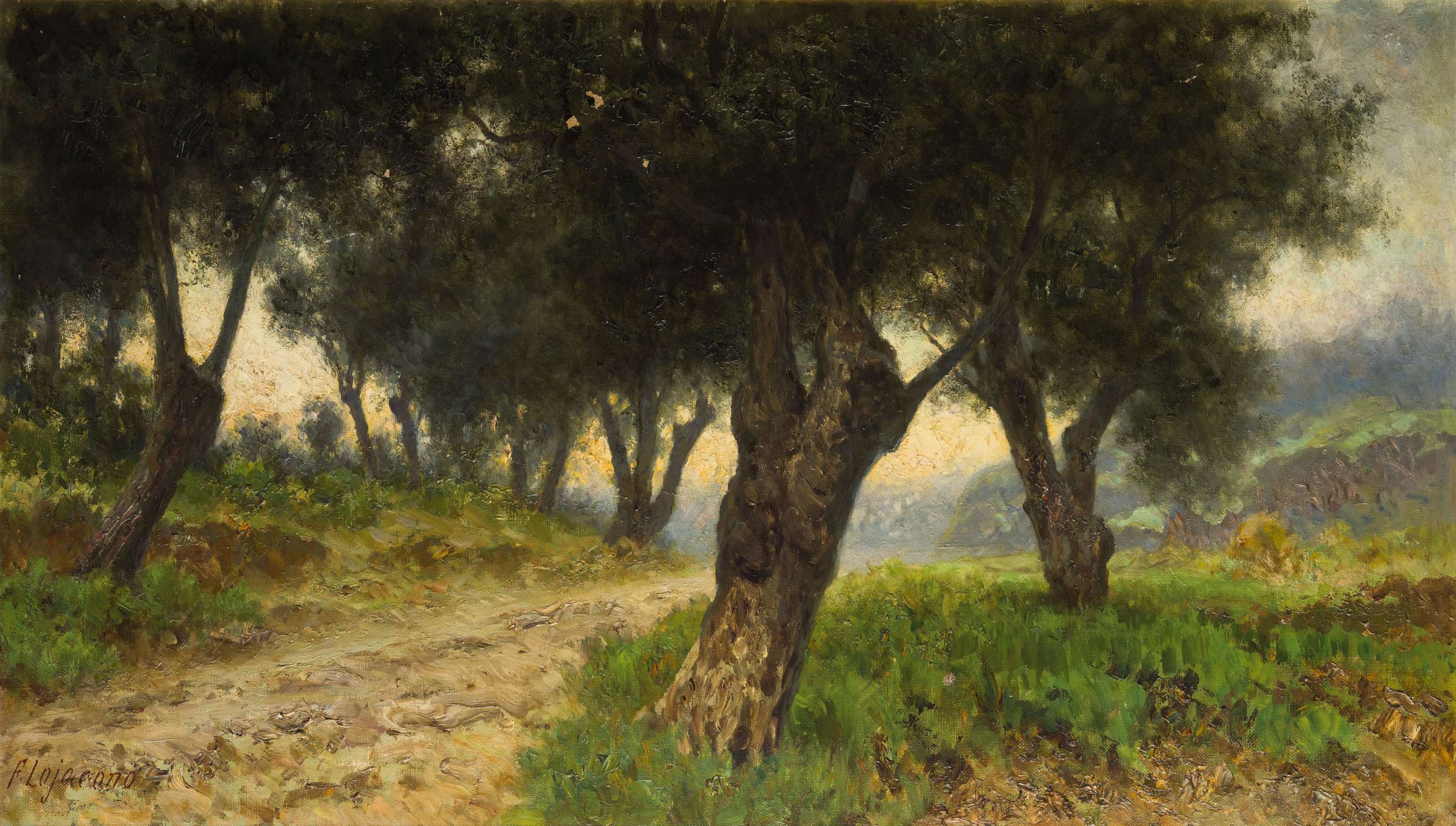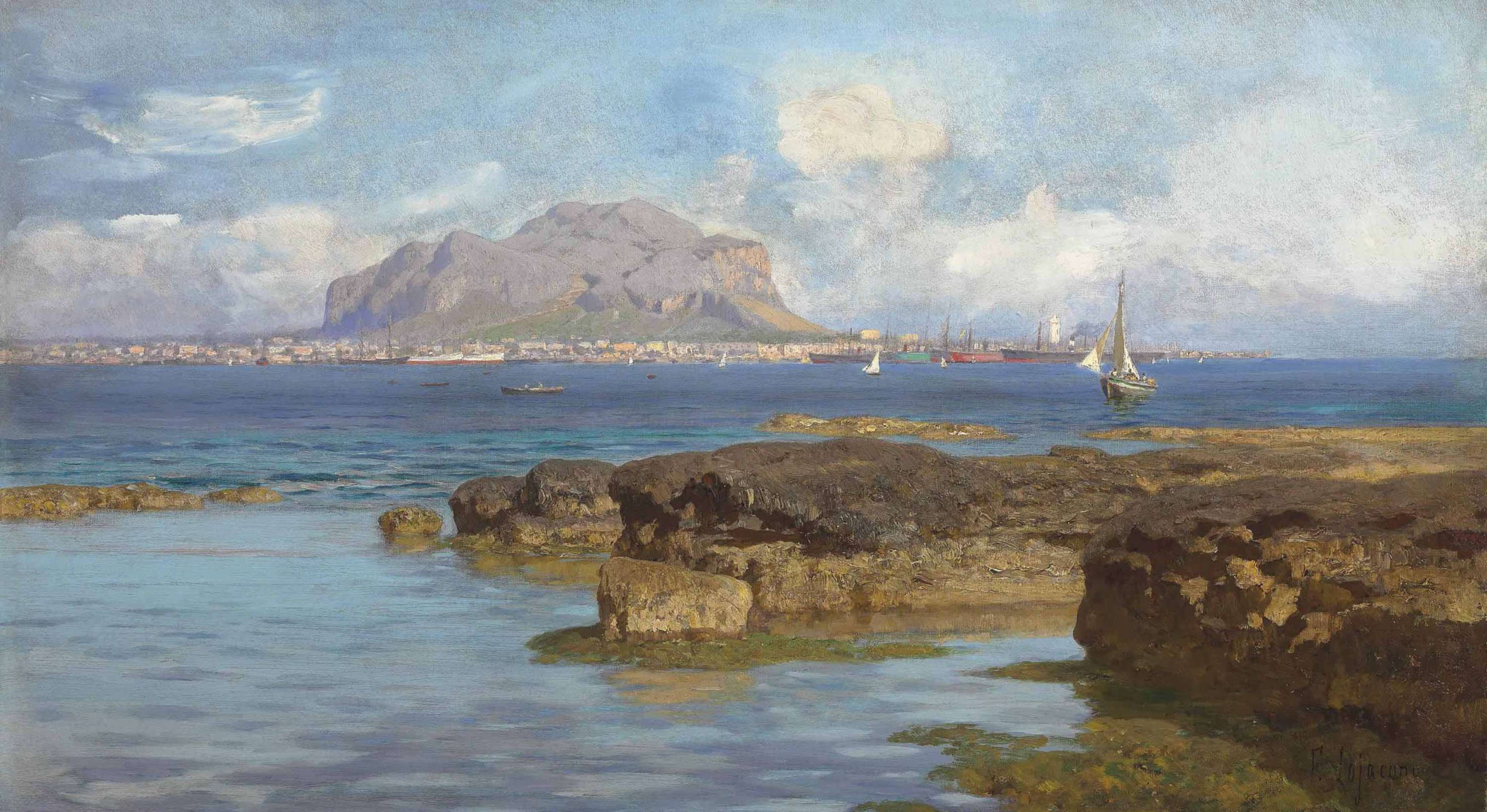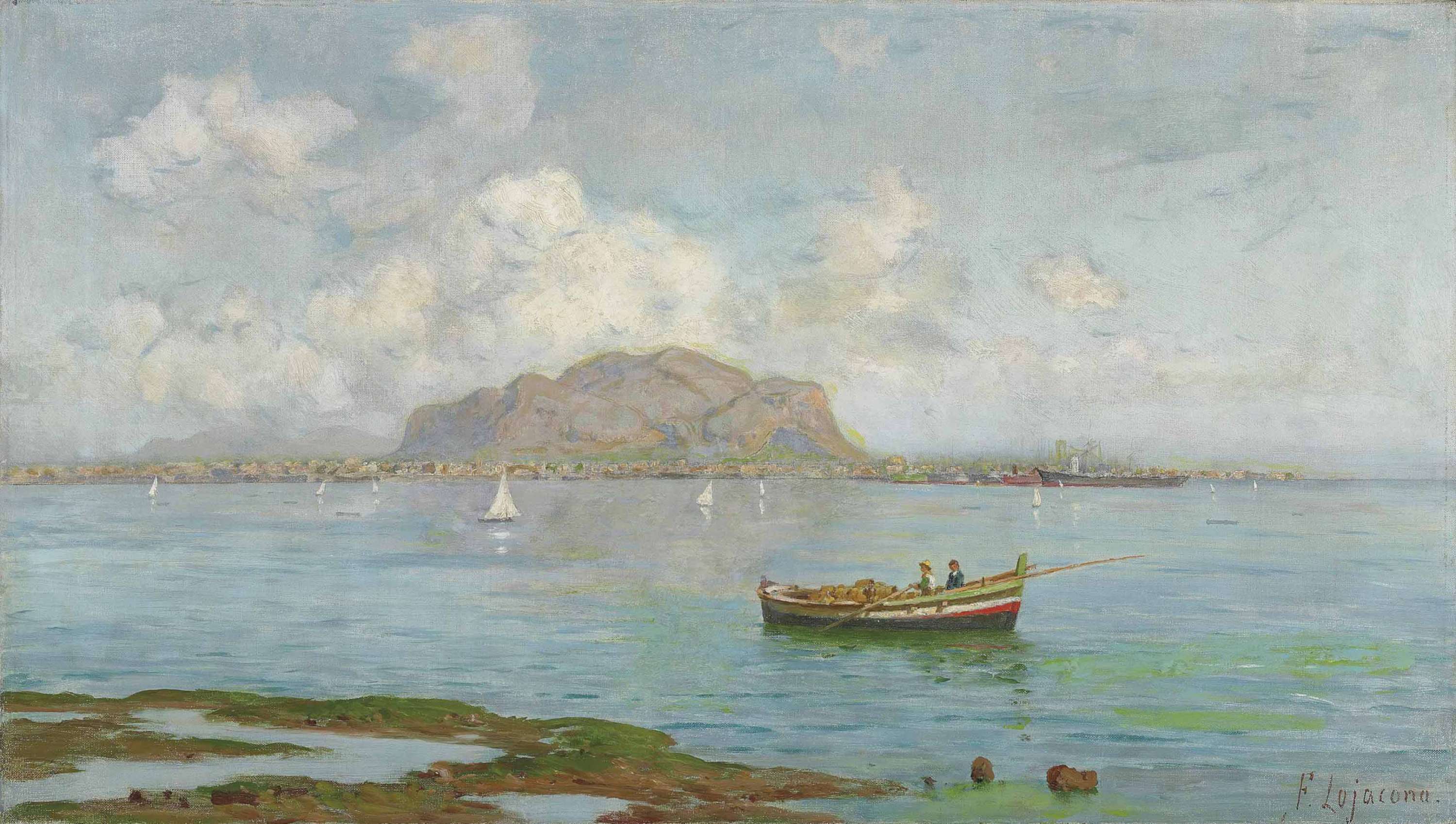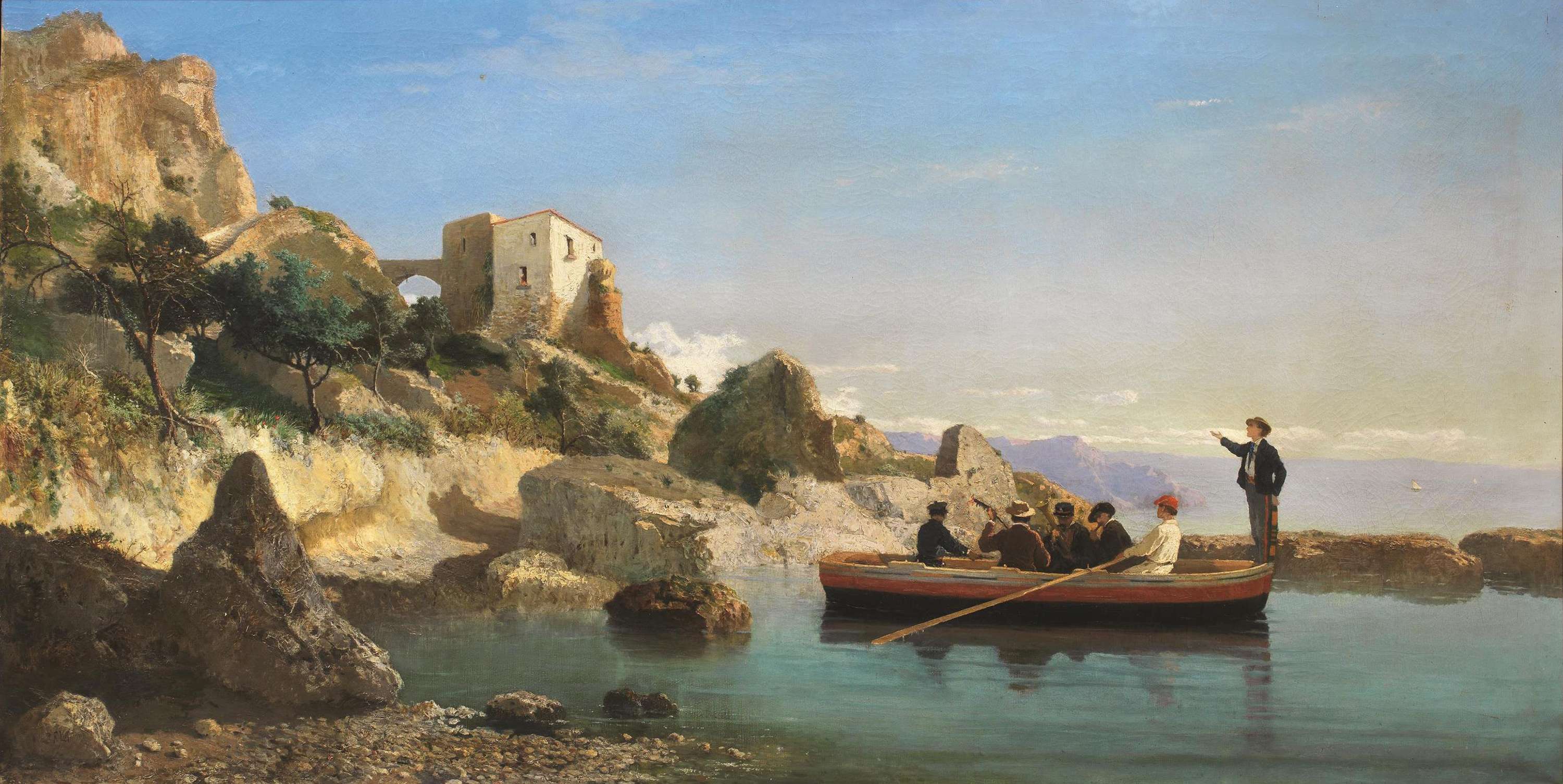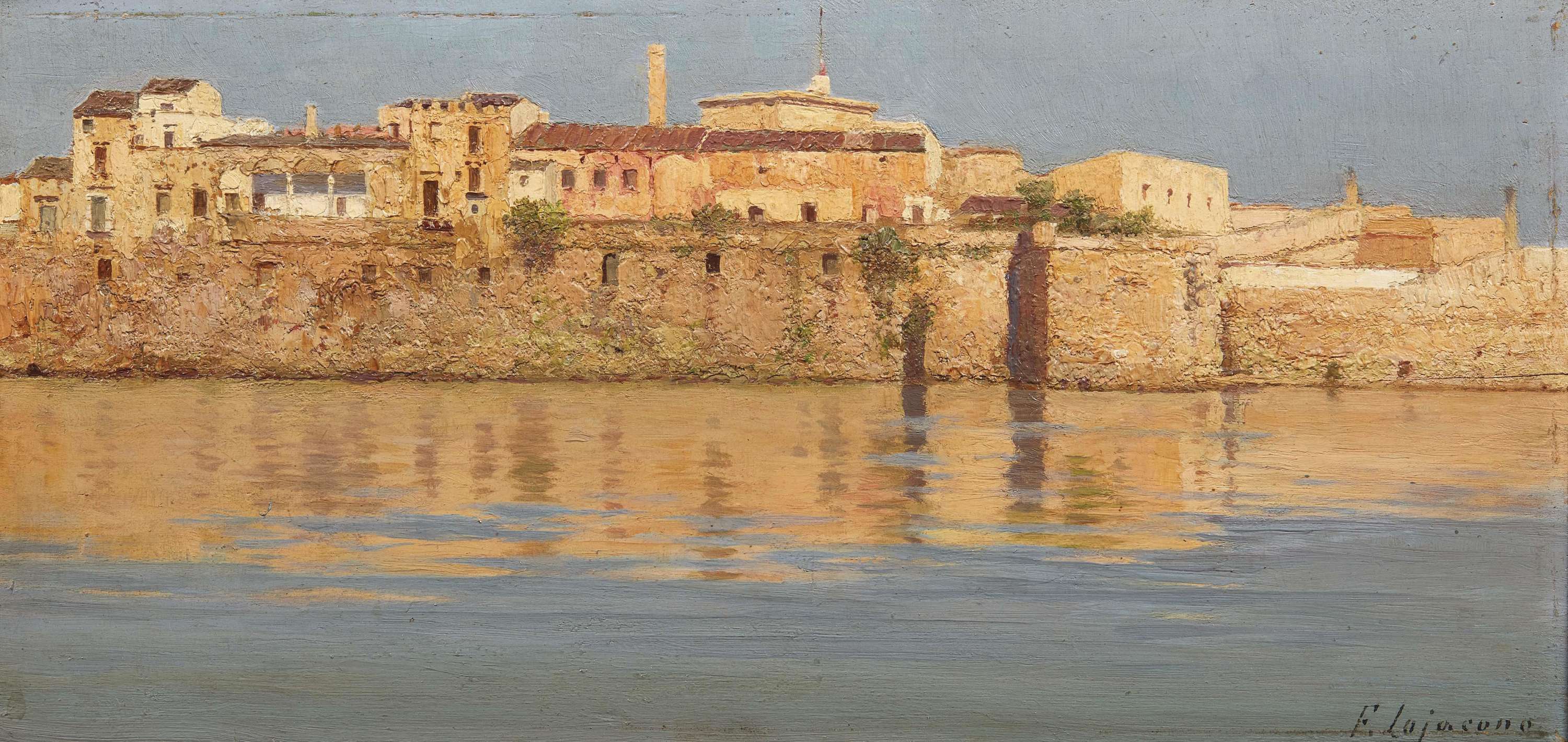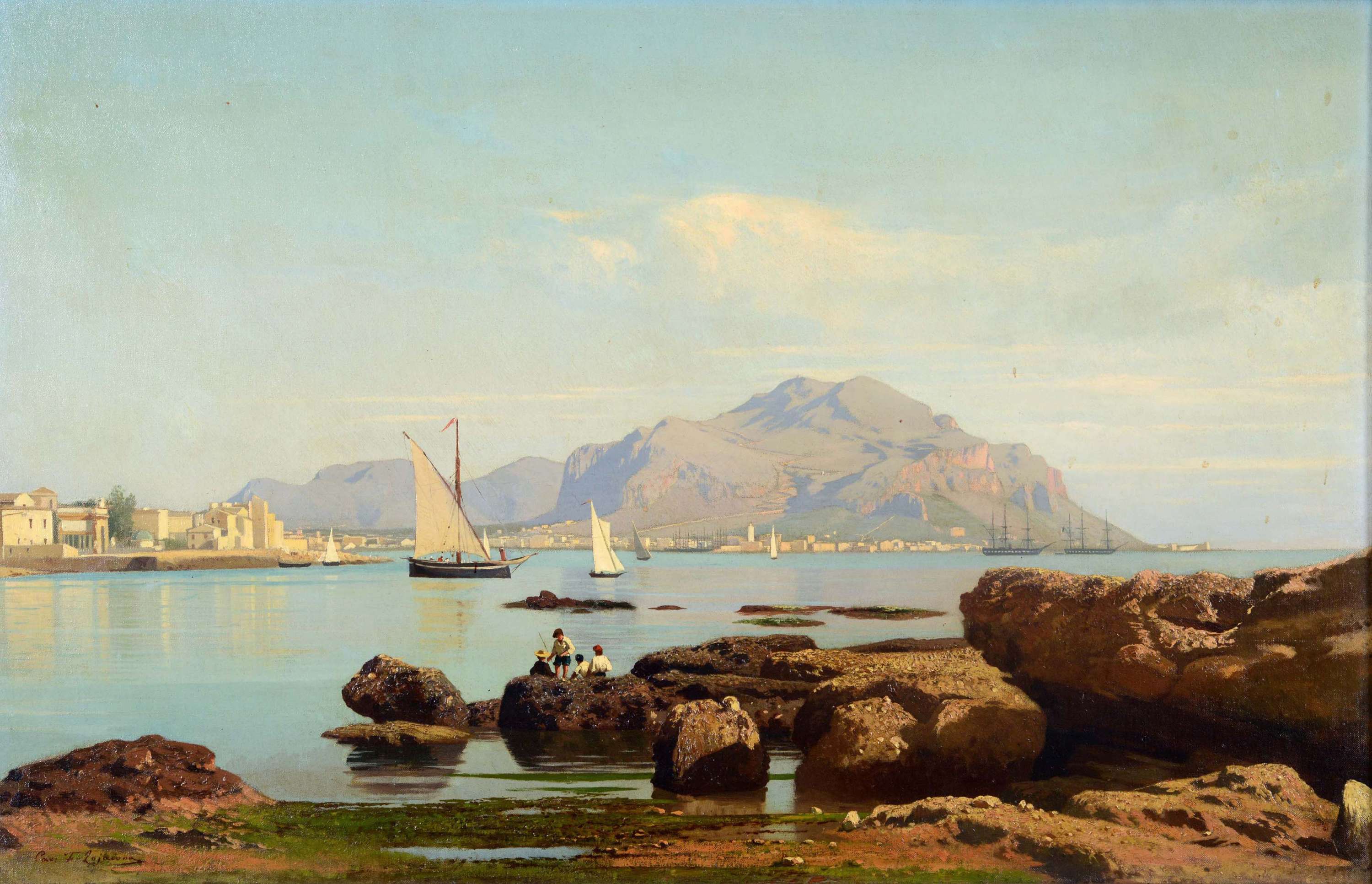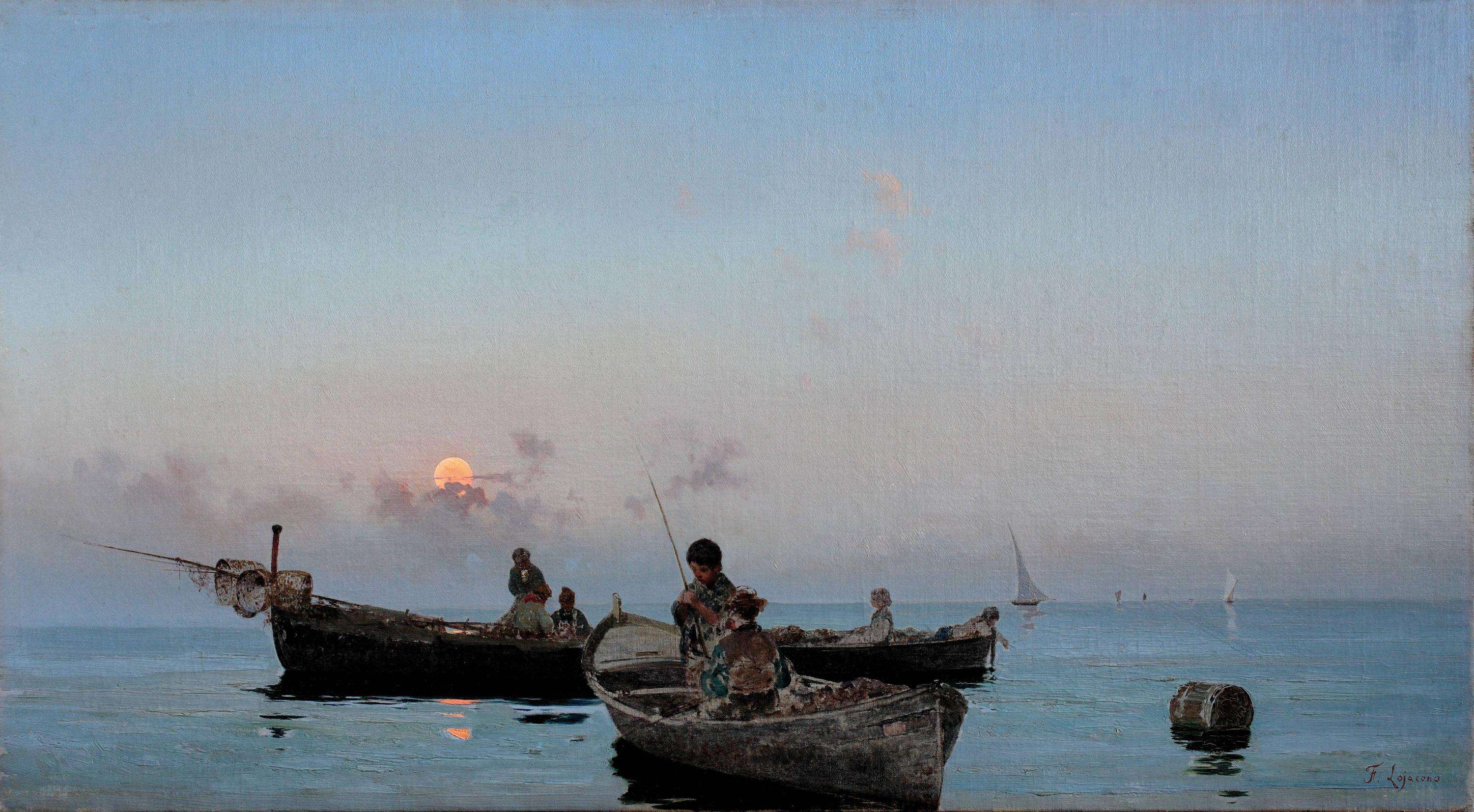Francesco Lojacono
Vedute
1900
He was born in Palermo, Sicily, and received his early training there with his father Luigi, a history painter, and Salvatore Lo Forte. Francesco Lojacono won a gold medal for a small canvas presented at an exhibition in Palermo, and this gained him a stipend to move in 1856 to Naples, where attended the school of Filippo Palizzi. With the outbreak of revolution in 1860, he returned to Sicily, he served in Garibaldi’s expedition of one thousand volunteers in 1860 and participated in the march towards Rome in 1862, when he was taken prisoner on the Aspromonte. Once free, he devoted his energies to painting intensely lyrical landscapes drawing inspiration in particular from the area around Agrigento and later the coast near Palermo.
He obtained the post of professor of landscape at the Naples Institute of Fine Arts in 1872 and taught the courses of landscape and seascape painting at the Palermo Academy of Fine Arts from 1896 to 1914. He took part in the international exhibitions held in Vienna (1872) and Paris (1878) and presented work with unquestionable success at the major national events, including the Palermo exhibition of 1891–92. He was named Commendatore of the Order of the Crown of Italy.
One of his pupils was Michele Catti, who together with Lojacono and Antonio Leto forms the so-called canonical triad of the Sicilian landscape artists of the Belle Époque.
